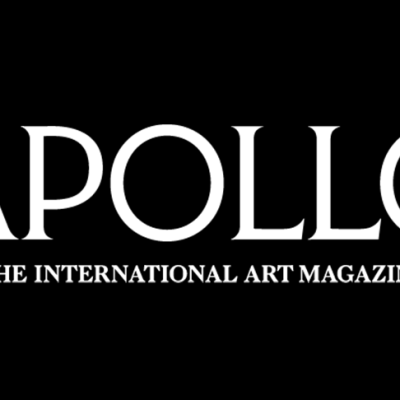From the January issue of Apollo: preview and subscribe here
It seems that everything is under construction here in Washington, D.C. The lawns of the National Mall are being dug up to improve drainage and restore the turf. Scaffolding shrouds the dome of the Capitol so that repairs can be made to its cast iron structure and windows. Trucks and hoarding are still stationed around the new National Museum of African American Culture and History designed by Ghanaian-British architect David Adjaye and due to open in 2016 – a floating ziggurat, as Adjaye describes it, whose corona, clad in an intricate bronze mesh, references Yoruban architectural traditions and the work of formerly enslaved Southern ironworkers. Meanwhile a major renovation campaign that began at the National Gallery of Art in the 1990s is continuing with alterations to I.M. Pei’s East Building, home to the modern and contemporary collections and the Gallery’s research centre. Thirty million dollars in donations are facilitating the addition of two new sky-lit galleries in the towers, an outdoor sculpture terrace, and the reconfiguration of existing gallery space. The main atrium, with its 76-foot-long Calder mobile hanging from the roof, has stayed open to the public while the builders are hidden from view.
Richard Serra’s Five Plates, Two Poles (1971) is among the sculptures that have remained on public display. It’s the most complex of Serra’s seven ‘plate and pole’ works, elaborating his abiding concerns of weight, mass, and space by leaning components of hot-rolled steel against one another in a delicate yet monumental play of balanced forces. The whole work weighs nearly 15 tons (about 13,282kg). Each plate alone is over 2,300kg, and the poles more than 700kg. Nothing is welded – the different elements rely on gravity to stay together. The overall effect is of a precarious stasis. You sense the enormous heaviness concentrated along the lines of the crossing poles which serve as a base, yet at points the plates merely graze the floor as if hovering. Serra is interested in this simultaneous weight and seeming weightlessness; he frequently recounts the moment in the shipyard where his father worked as a pipe-fitter, when he witnessed a tanker float free of its cradle. He has also said, in defense of his Vulcan-like work with industrial materials on a large scale, that ‘everything we choose in life for its lightness soon reveals its unbearable weight’.
There could be no doubt about the sculpture’s weight last month when, marking the beginning of the complete reinstallation of the East Building, it was moved from the concourse to ground level. The four-day transit involved six months of planning, eight riggers, two in-house art handlers, and dozens of administrative staff. Forklifts, gantries, steel A-frames, and dollies were brought in. An engineer’s survey had to be made of Pei’s floors; would they be strong enough to support the combined tonnage of the steel and the moving equipment, and what would be the best route upstairs? The marble paving was covered with layers of plywood to protect it and help distribute weight, and temporary wooden bridges were built over three areas of potential weakness in the concrete structure.
The five plates had to be locked into place in separate frames while they were taken apart from one another piece by piece in sequence, like dismantling a house of cards without letting the whole thing fall. Museum staff looked on while teams of men pushed the plates on dollies, into the freight elevator, and up to one of the apexes of the ground floor’s interlocking triangles. It was literally (to use a phrase Benjamin Buchloh has applied to Serra’s early work) ‘sculpture between labor and spectacle’.
In its new location Five Plates discloses itself differently. You can no longer look down on to it from the atrium balconies. Instead you’re forced to meet it frontally before walking round to discover the spaces and intervals created by its juxtapositions. But for me it’s impossible to look at the sculpture now without recalling those days of deconstruction and reconstruction. After seeing the clamping, lifting, strapping, and pushing of its component parts, the mixture of intractability and precariousness that it holds in tension is as present as ever.


